Liverpool’s FACT: Interview with CEO Nicola Triscott // ‘And Say the Animal Responded?’ review
September 18, 2020
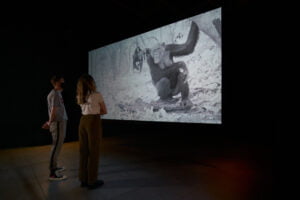
Amalia Pica & Rafael Ortega, Pan troglodytes ellioti and cousins (2016). Image by Rob Battersby. Installation view at FACT.
After months of waiting and worrying, galleries are open again. At Liverpool’s FACT, new exhibition ‘And Say the Animal Responded?’ takes attendees on a journey through the ideas of several artists trying to make sense of the relationship between humankind, our technology and the animals that share our world.
Several installations of sculptures, instruments, machines and screens have filled FACT since August, and TSOTA went along to experience the revival of one of the North’s best loved arts venues. We also spoke to Nicola Triscott, CEO of FACT and the exhibition’s curator, about the installations, the past year and what’s next for FACT.
Nicola started at FACT in May 2019 and soon began planning an exhibition for spring 2020. It was one week away from opening when the pandemic put it on a lengthy pause: “Everything changed in lockdown. The context changed and we had to do everything online.”
The title is taken from an essay by philosopher Jacques Derrida, who questions the argument that animals are just reactive, as opposed to humans who are able to respond. There’s an insistence coming out from the installations that the animal subjects are missing out on something, and that’s the choice to be subjects. We can watch and interfere with animals and their habitats, but would they say if we asked?
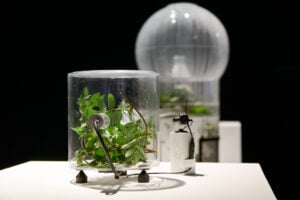
Kuai Shen, Oh!m1gas (2012). Image by Rob Battersby. Installation view at FACT.
The exhibition begins with a piece by Amalia Pica and Rafael Ortega, showing footage of chimpanzees at night that powerfully communicates their personalities and perplexity at being filmed. Footage across the room shows gallery attendees entering and watching the chimps, unaware they’ve been recorded and, most likely, uncomfortable with this unawareness.
This is the key motif of the collection.
“For all you want, you cannot make a show that’s from the animal’s perspective because it’s always going to be a technological intervention by us in some way,” says Nicola. “I think the wolves really show that.”
‘The wolves’ is probably the most enchanting piece of the exhibition. Made by Demelza Kooij, it shows a drone’s view of a wolf pack who dart across the grass beneath whilst occasionally looking up at the humming object above. The drone footage is positioned on a screen in the gallery floor centre; from every angle you view it, you are the drone.
What makes it truly incredible is the accidental dance the wolves perform, as they wander on and off the screen in graceful patterns and directions. When they look up to the attendees, the fourth wall is broken; we feel caught in the act of spying.
The upstairs section is dedicated to Alexandra Daisy Ginsberg, with two pieces that have a more dystopian feel to them. ‘The Substitute’ features a “digital resurrection” of a Northern White Rhino, which became extinct in 2018 but is brought to life through AI.
‘Machine Auguries’ is a multi-sensory display of a process of nature we’ve all heard a hundred times in lockdown. Recordings of the dawn chorus build in volume as a light brightens to create a sense of waking, but again, AI-generated birds infiltrate and the two battle, suggesting how the chorus may soon sound.
The symbolism makes these pieces the most didactic, and today’s context adds to their urgency. As Nicola explains, “The pandemic came from humans interfering with animals in their natural environment, like Ebola with the eating of Chimpanzees and swine Flu with herding pigs … I hope we realise the balance needs to change.”
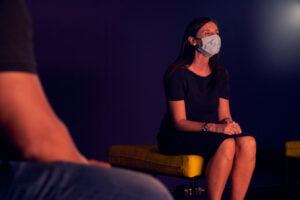
Alexandra Daisy Ginsberg, Machine Auguries (2019). Image by Rob Battersby.
A surprising takeaway from the exhibition though is more positive: the pandemic’s inadvertently enhancing effects on the exhibition experience.
“A lot of innovation and resourcefulness has come out of the organisation having to do things in a different way and I think the exhibition has been made better for it.”
Technology was introduced to ensure the sound of an installation only kicks in when a person approaches it, preventing any clashing between pieces, whilst the use of QR codes rather than headsets makes information easier to access. For FACT, adaptation in the face of a crisis has made for an even better audience experience.
“The journey we’ve gone on as an organisation to rethink ourselves and rethink what immersive, interactive art means when you can’t touch anything and you have to be socially distant – it’s been a good intellectual exercise for us and kept us engaged.”
Despite the silence and stress of the last half a year, there have been benefits to a world-changing pandemic, and the FACT team are ready to put their ideas into practice again. They’re plans for the next year of programming will explore themes including social media, the climate and race.
“I’m so sick at looking to the next few or few weeks ahead, and that’s all we’ve done for the last six months. It’s so nice to sit around and talk about 2, 3, 5 years, the next 8 years…”
With a programme that promises to continue the thought provoking quality of ‘And Say the Animal Responded?’, it’s no surprise that FACT have found themselves on the other side of lockdown not just in one piece, but ready to push the boundaries even further.
Filed under: Art & Photography
Tagged with: animals, art, covid-19, exhibition, FACT, gallery, interview, liverpool, Nature, photography, Sound
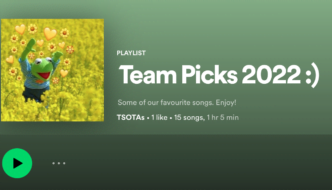
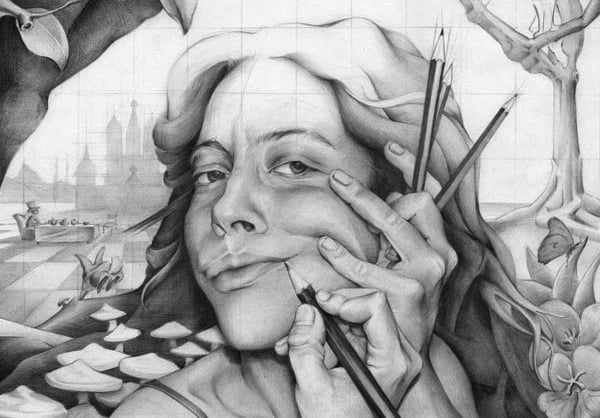
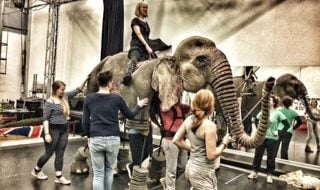
Comments